How to Make Collapsible Boxes Efficiently?
Tired of high shipping costs for rigid boxes? Want to save space in your warehouse? Collapsible boxes are the smart answer. 1
Making collapsible boxes efficiently needs specialized machinery and a focus on precision in the folding lines. These boxes save space when flat, cutting down on shipping and storage expenses. 1 Machines designed for this process ensure accuracy and speed.
Let me tell you, getting collapsible boxes right is key for many businesses today. It’s not just about saving money; it’s about making a product that works well for everyone, from the maker to the final customer. Here at Kylin, we see this need a lot.
How do you make a box easier to carry?
Is shipping bulky, assembled boxes costing you too much? Does storage space feel tight? Collapsible boxes solve this problem. 1
You make a box easier to carry by designing it to fold flat. This saves a lot of space compared to a fully formed box, making shipping and handling much simpler and cheaper. 1
!
When I talk with customers, especially those shipping boxes far away, they always ask how to cut costs. Making boxes flat-pack is the best way. Think about it: you can fit so many more flat pieces into a truck or storage unit than you can assembled boxes. But making a box that folds flat but still feels sturdy when put together is the trick. It starts with the design. The box pieces need to be cut and scored in a way that allows clean folding. Then, you need to join the pieces, but in a way that the box can still collapse. This usually involves stay tape on the edges 2. The material needs to be prepared correctly so the folds are crisp. If the folds aren’t right, the box won’t sit flat when collapsed, or it won’t form correctly when opened. This is why precise material preparation is so important. For example, using a grooving machine helps create very clean fold lines. 2
Designing for Flatness
- Panel Layout: Plan how the different sides and base connect and fold.
- Folding Lines: The lines where the box folds must be placed correctly.
- Joining Method: Use tape or glue in specific places to allow folding but create strength when assembled.
Material Preparation
- Cutting: Cut panels accurately to size and shape.
- Scoring/Grooving: Create the fold lines. Grooving is often preferred for rigid boxes. 2
| Method | Description | Result on Fold Line | Best Use Case |
|---|---|---|---|
| Die Cutting | Cuts through most of the material. | Can leave a slight recess. 2 | General box making |
| Grooving | Cuts a precise channel part-way. 2 | Creates a sharp, clean line. 2 |
High-quality rigid boxes 2
Getting these steps right means the final box will be easy to fold, easy to carry when flat, and strong when popped open.
How to do a foldable box?
Wondering how factories turn flat cardboard into a box that folds? It takes specific steps and the right tools. 1
To make a foldable box, you need to prepare the cardboard by cutting and creating precise fold lines, often using grooving. Then, the pieces are joined, usually with stay tape, in a way that allows the box structure to collapse and erect easily. 2
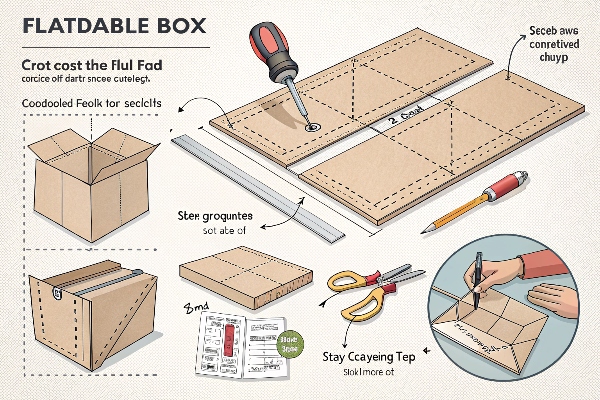
Making a box that folds neatly requires attention to detail at every step. It’s not just about folding it; it’s about building in the ability to fold. The process usually starts with flat cardboard or chipboard. First, you cut the material to the right size and shape for the box panels. Next, and this is a really important part for rigid foldable boxes, you create the fold lines. For high-quality foldable boxes that look like rigid boxes when assembled, we often use a grooving machine. 2 This machine cuts a clean channel in the board where the fold will be. This is different from normal die-cutting, which might just crease or cut through more of the material. Grooving makes the fold line sharp and allows the material to bend at exactly 90 degrees without damaging the outer paper layer or creating rounded edges. 2 After grooving, you remove any waste material. Then, you typically use a machine to apply stay tape along the edges that will form the box corners. This tape holds the panels together while still allowing them to fold flat. For a collapsible box, you might tape some edges permanently while others are designed to pop into place when the user forms the box. Machines like ours are designed to handle these steps quickly and accurately. 1 3 The goal is to have flat pieces come off the line, ready to be easily folded into a box shape by the customer.
Key Steps in Making a Foldable Box
- Material Cutting: Get the exact size and shape.
- Grooving: Make precise fold lines. 2 This is better than die-cutting for rigid style boxes. 2
- Waste Removal: Clean up the cut pieces.
- Taping: Apply stay tape to join panels, allowing specific folds. 2
- Stacking: Stack the flat pieces for shipping.
| Process Stage | Purpose | Machinery Used Often |
|---|---|---|
| Cutting Board | Shape the box panels | Cutting machine |
| Creating Fold Lines | Enable bending cleanly | Grooving machine 2 |
| Joining Panels | Connect sides while allowing folding | Stay tape machine 2 |
| Quality Check | Ensure folds work and box is strong | QC inspection 1 |
Doing these steps right makes sure the box folds well and is strong when someone puts it together.
How to make collapsible rigid boxes more sturdy?
Worried collapsible boxes feel flimsy? Think they won’t hold up like traditional rigid boxes? They can be very sturdy. 1
You make collapsible rigid boxes sturdy by using strong materials and creating sharp, clean fold lines through precise manufacturing like grooving. This ensures the box holds its shape and strength when assembled, feeling much like a non-collapsible rigid box. 2
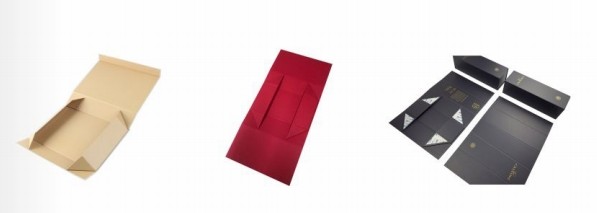
When people hear "collapsible," they sometimes think "weak." But that’s not true for properly made collapsible rigid boxes. The goal is to have a box that is rigid and strong when put together, but can lay flat for shipping. The sturdiness comes from a couple of key things. First, the material itself must be strong. We are talking about chipboard or greyboard here, often covered with paper. The thickness and quality of this board matter a lot. A thicker, denser board will naturally make a sturdier box. Second, how you prepare the fold lines is critical for sturdiness when assembled. Using a grooving machine is key for rigid boxes 2. Instead of just bending the board, grooving removes a section, allowing the board to fold sharply and cleanly at 90 degrees 2. This creates strong, defined corners when the box is formed. If you just crease or die-cut the board, the fold might be softer, or the corner might not be as sharp, which can make the assembled box feel less sturdy. The way the panels are taped together also adds strength. Applying strong stay tape precisely along the grooved edges helps the box maintain its rigid shape once formed 2. It’s the combination of good materials and precise manufacturing steps, especially the grooving process, that makes a collapsible rigid box feel solid and sturdy, just like a traditional rigid box, but with the added benefit of folding flat.
Factors for Sturdiness
- Board Material Quality: Use strong, suitable chipboard or greyboard.
- Precise Grooving: Creates clean, strong fold lines that form sturdy corners. 2
- Strong Tape: Use high-quality stay tape to secure edges. 2
- Accurate Assembly: The box parts must fit together perfectly when folded.
Comparing Fold Methods and Sturdiness
| Fold Method | How it Affects Sturdiness | Visual Result on Corner |
|---|---|---|
| Die Cutting | Can make the fold line weaker; corners might be softer. 2 | Rounded edge often. 2 |
| Grooving | Allows for a sharp, strong 90-degree fold. 2 | Clean, crisp corner. 2 |
Focusing on these details in production means you get a box that is both collapsible and very sturdy when used.
How do you make a sturdy box?
Need a box that protects its contents well? Want packaging that feels premium and strong? Sturdy boxes are made with care.
Making a sturdy box requires selecting appropriate, strong materials and employing manufacturing methods that ensure structural integrity, especially focusing on clean folds and strong joins. This includes using quality board and precise techniques like grooving. 2
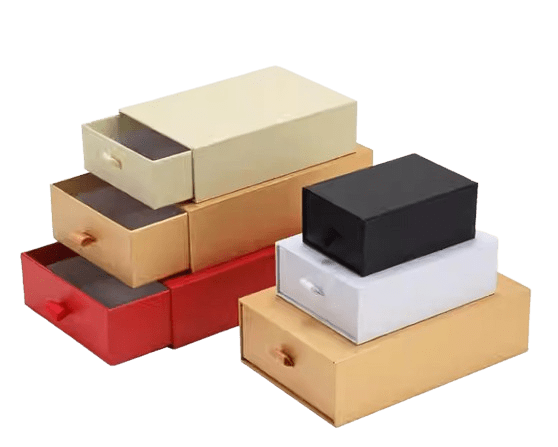
Building a sturdy box is about more than just putting four sides and a lid together. It starts with the materials. You need to pick cardboard or paperboard that is strong enough for the job. For rigid boxes, we use thick chipboard or greyboard. This material provides the main structure. On top of that, you add covering paper, which adds to the look and a little to the strength. But the real strength comes from the structure you create. How you prepare the board for folding is crucial. As I mentioned before, grooving is a technique we use a lot for rigid boxes. 2 It cuts a V-shaped channel into the board where the fold will be. This lets the board bend exactly where you want it to, creating a very clean, sharp corner when you fold it up. 2 Die-cutting, while common, can sometimes weaken the fold line or not give that sharp 90-degree angle you want for a truly rigid feel. 2 Once the board is grooved, you use strong tape, called stay tape, to join the edges 2. This tape provides significant strength at the corners, holding the box together firmly when it’s assembled. The precision of our machines ensures the grooving and taping are done accurately every time 1. This means every box comes out with strong, reliable corners. Even for collapsible rigid boxes, the same principles apply. The goal is a box that feels solid and protective once the user forms it. Using the right materials and focusing on precise processes like grooving 2 and accurate taping 2 is how we make sure the boxes we help create are truly sturdy.
Elements of a Sturdy Box
- Material Selection: Choose strong board material.
- Precision Folding Lines: Grooving creates superior fold lines for rigidity. 2
- Strong Adhesion: Use durable tape or glue for secure joints. 2
- Accurate Dimensions: Correct cutting and forming mean parts fit well. 3
Process Impact on Sturdiness
| Process Step | Contribution to Sturdiness | Benefit |
|---|---|---|
| Board Selection | Provides inherent structural strength | Box holds weight and shape. |
| Grooving 2 | Enables precise, strong 90° folds 2 | Creates rigid, well-defined corners. 2 |
| Taping/Gluing 2 | Secures joints firmly 2 | Prevents box from falling apart. |
| Machine Forming 3 | Ensures consistent shape and fit 3 | Reliable structure every time. |
By paying attention to these details, you can produce boxes that are not just boxes, but sturdy containers that protect and present products well. Our machines help achieve this consistency. 1
Conclusion
Making collapsible boxes efficiently relies on precise manufacturing methods and specialized machines. Using grooving and strong materials ensures boxes are sturdy when formed and save costs when flat. 1 2

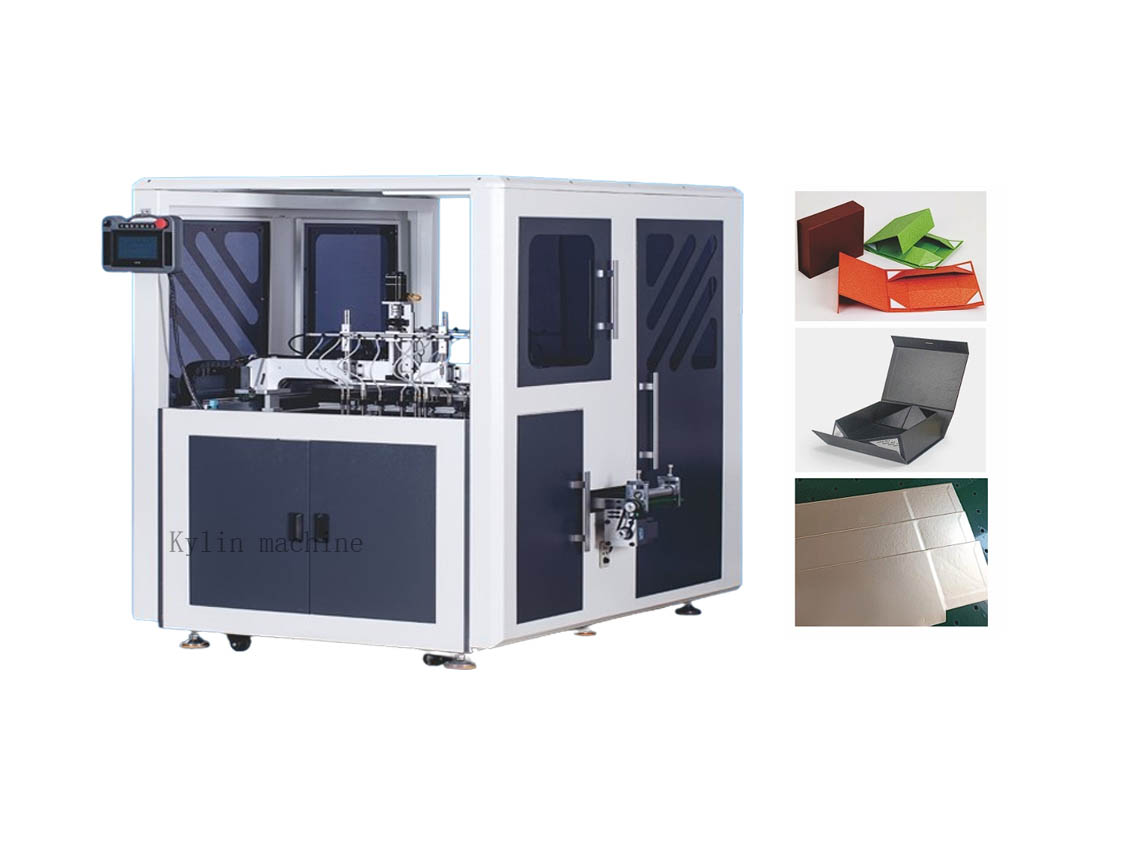
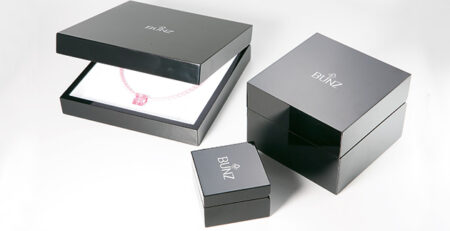
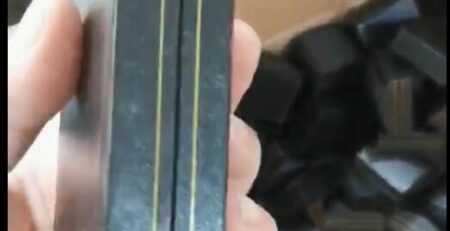

发表回复